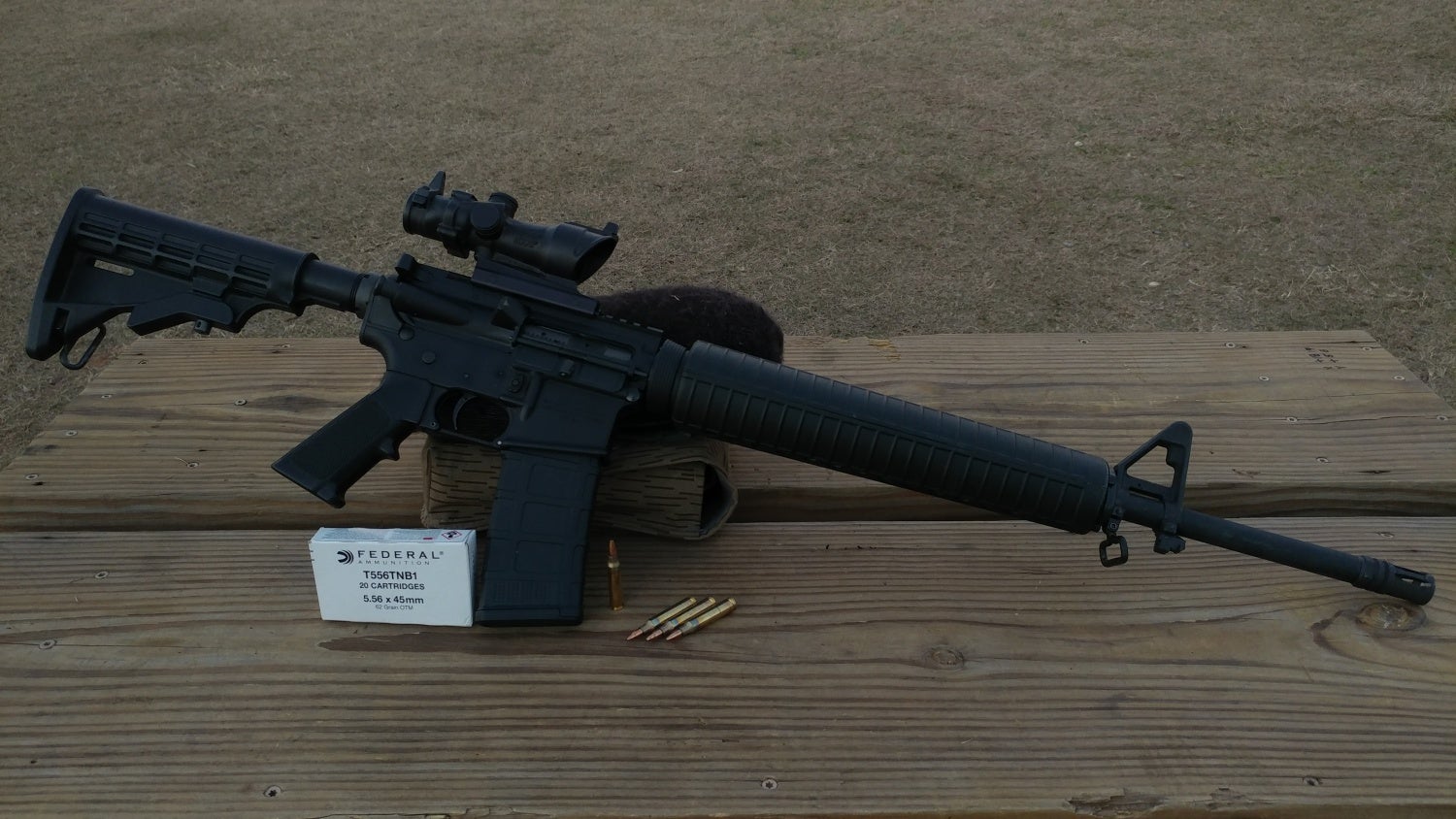Next up for the Big Freakin’ Cartridge Test is Federal’s T556TNB1 load, which is the civilian market name for the Mk.318 SOST projectile developed by US SOCOM as a “barrier blind” round for the M4 Carbine and Mk. 18 CQB upper receiver. This ammunition uses a reverse drawn jacket to improve accuracy, and couples a fragmenting front end with a solid gilding metal base that improves penetration through tough barriers. I love this ammunition and use it religiously for home defense. Continuing on from the last installment, we are now looking at the velocity test results for the 20″ barrel (more on the 16″ later).
The test procedure was as follows:
- Condition ammunition to 70 °F +/- 5 degrees for at least 1 hr (in practice ammunition was always conditioned overnight).
- Mount chronograph to barrel or rail.
- Record the temperature in the conditioned container before each string.
- Withdraw one round of ammunition from the cooler.
- Load and immediately fire the round.
- Cool chamber back to ambient conditions for 30 seconds*
- Repeat steps 3 through 6 nine more times.
This procedure was followed for 14.5″, 16.1″, and 20″ barrel length velocity tests. To measure velocity, a Magnetospeed V3 chronograph was used attached to the barrels of the 16.1″ and 20″ uppers, and the rail of the 14.5″ upper. It needs to be noted that for all 16″ barrel testing, a cooling time of 10 seconds was used instead of 30, as it was becoming obvious that the additional 20 seconds were unnecessary. In the future, 10 seconds will be used for all barrel lengths.
The chronograph results for the 20″ FN chrome-lined CHF barrel are as follows (Shot #, followed by muzzle velocity in ft/s):
1. 3,102
2. 3,093
3. 3,082
4. 3,084
5. 3,085
6. 3,072
7. 3,092
8. 3,067
9. 3,100
10. 3,097
Which gave us the following figures:
Min: 3,067 ft/s
Max: 3,102
Avg: 3,087
Standard Deviation:11.6
Extreme Spread (highest minus lowest): 35
And the chronograph results for the 16.1″ Colt chrome-lined cut rifled barrel (Shot #, followed by muzzle velocity in ft/s):
1. 2,956
2. 2,966
3. 2,970
4. 2,933
5. 2,976
6. 2,987
7. 2,952
8. 2,962
9. 2,972
10. 2,972
Which gave:
Min: 2,933
Max: 2,987
Avg: 2,964
SD: 14.9
ES: 54
With the Mk.18, we see something we haven’t really seen before in a BFCT test: Mostly uniform results across all three barrel lengths. Sure, the 20″ barrel had the lowest SD and ES, but for all intents and purposes, the results for all three barrel lengths were similar. SDs were higher than 10 but lower than 20, and ESes were between 30 and 60 ft/s.
Here we can also see a good example of the rise in popularity of 14.5″ barrels. When ammunition is designed with the shorter barrel length in mind, the velocity advantage of the longer barrel become much less evident: The average muzzle velocity for the 14.5″ barrel was just 172 ft/s s
lower than that of the 20″ barrel – or just 5.6% less! In terms of fragmentation range, assuming a rough threshold for Mk. 318 of 2,200 ft/s, that means the 20″ barrel nets you 50 extra meters (270 m vs. 220 m for 14.5″) – but with a velocity advantage at that 270 m distance of less than 7%.
 Your Privacy Choices
Your Privacy Choices

